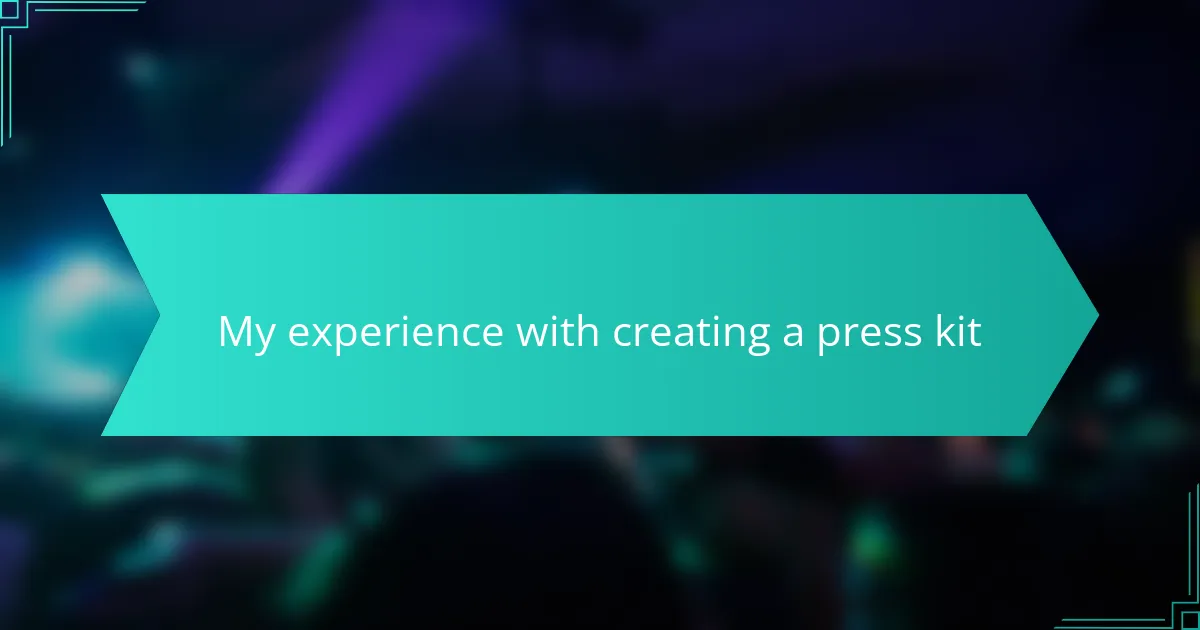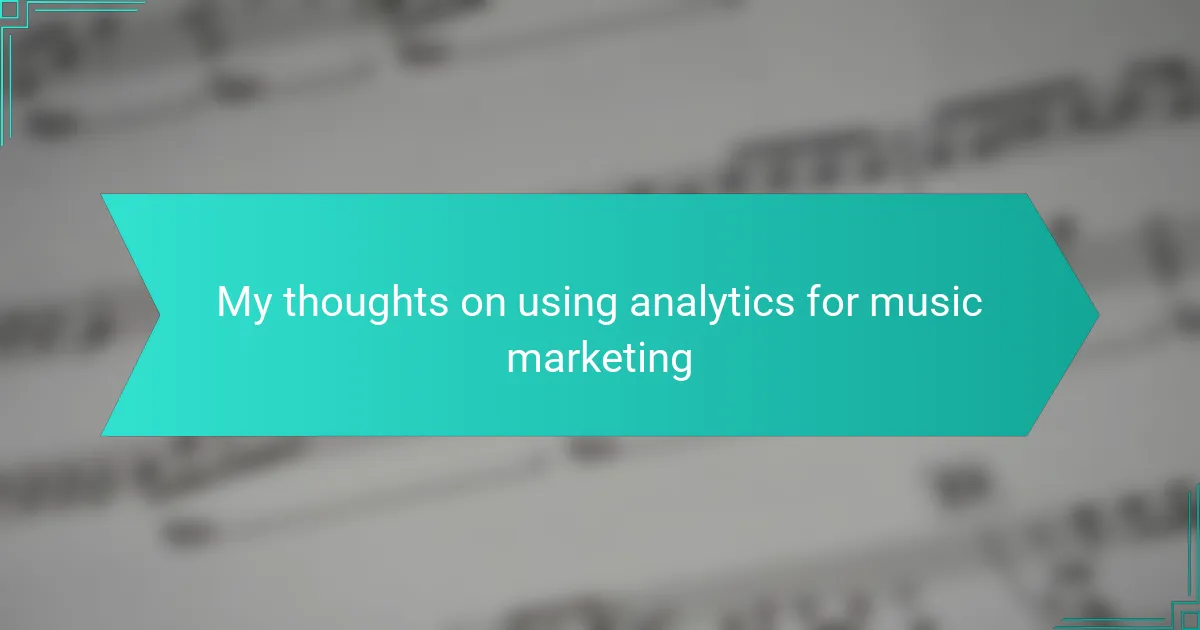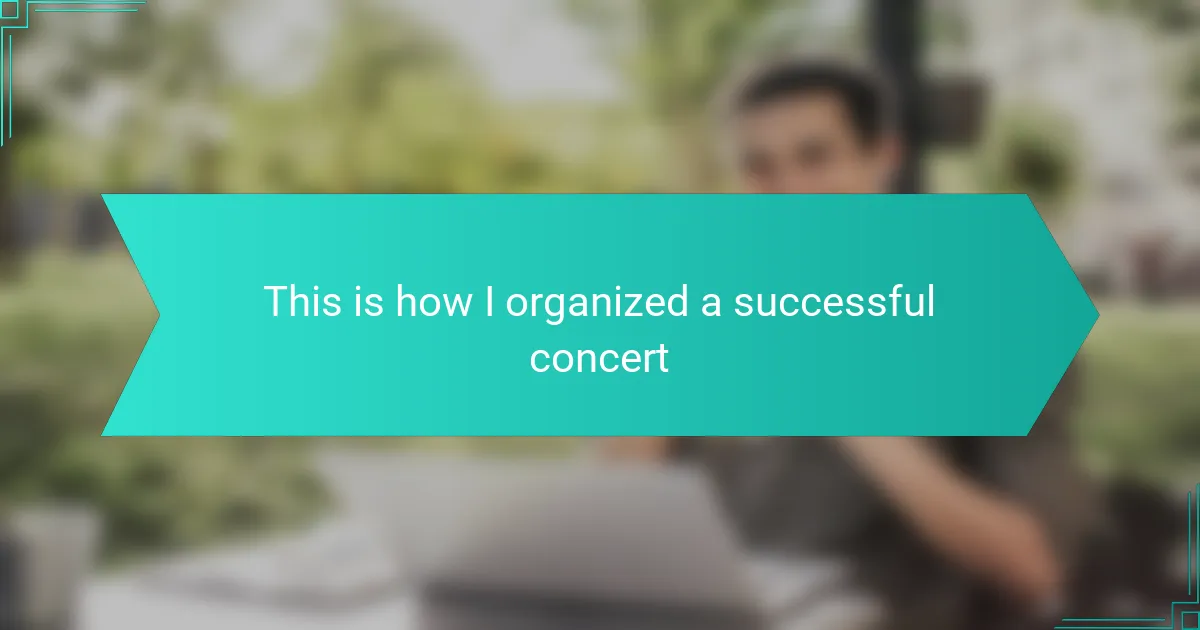Key takeaways
- Collaboration enhances creativity, allowing musicians and graphic designers to share and elevate each other’s artistic visions.
- Effective communication and clear expectations are vital for a successful partnership, ensuring both parties align on goals and feedback.
- Visual identity through graphic design plays a crucial role in attracting listeners and building a recognizable brand.
- A thorough review and strategic launch plan are essential for maximizing the impact of new designs in the music industry.
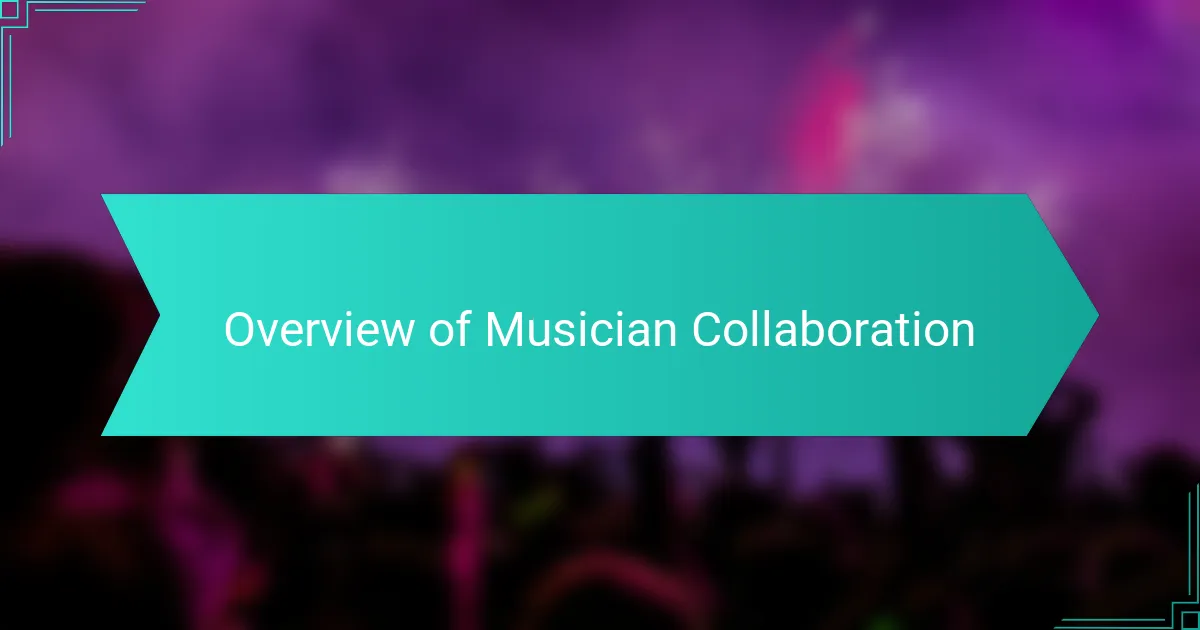
Overview of Musician Collaboration
Collaboration in music is like a vibrant tapestry woven from various threads. Each musician brings their unique voice to the table, creating something far greater than what any one of us could achieve alone. I remember working with a graphic designer on my album cover; it felt like we were both painting a shared vision.
When I think about collaborating, I can’t help but wonder: What could we create if we combined our different skills? Musician collaborations often lead to surprising outcomes. I’ve found that bouncing ideas off a talented designer not only elevates my visual brand but also inspires my music.
The emotional connection in collaboration is profound. I felt invigorated when my graphic designer suggested a color scheme that resonated perfectly with the themes in my album. That synergy, that mutual respect for each other’s craft, is what makes working together so rewarding and impactful. It’s truly a dynamic where both parties grow creatively.
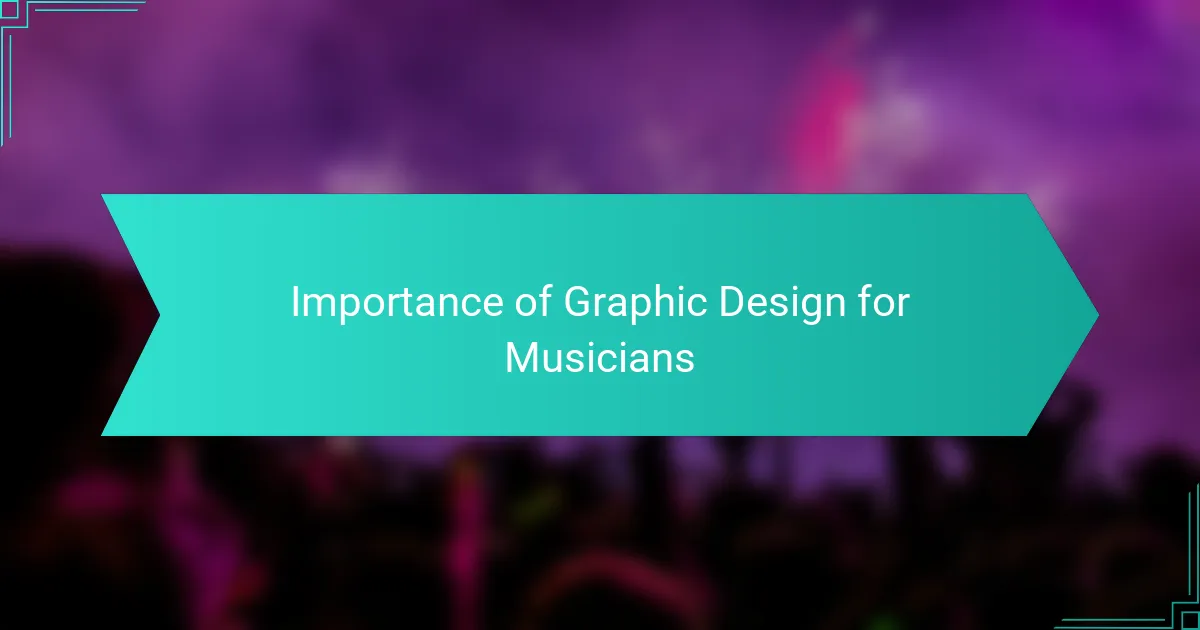
Importance of Graphic Design for Musicians
Graphic design plays a crucial role in how musicians present themselves to the world. It’s more than just art; it helps convey the emotions and themes of our music visually. I’ve seen firsthand how a well-designed album cover can spark curiosity in potential listeners. It makes them want to delve deeper, doesn’t it?
When I collaborated with my graphic designer, we explored different styles that matched the essence of my sound. The process was enlightening; I realized that the visuals could amplify the feelings in my songs. It was fascinating to see how colors, fonts, and images transformed my ideas into something tangible, drawing fans into my artistic world.
In today’s digital age, where first impressions matter immediately, a strong visual identity through graphic design can set a musician apart from the crowd. I’ve learned that whether it’s a website, social media posts, or merchandise, cohesive design elements create a brand that fans recognize and trust. Isn’t it exciting to think about how the right visuals can enhance our connection with listeners?
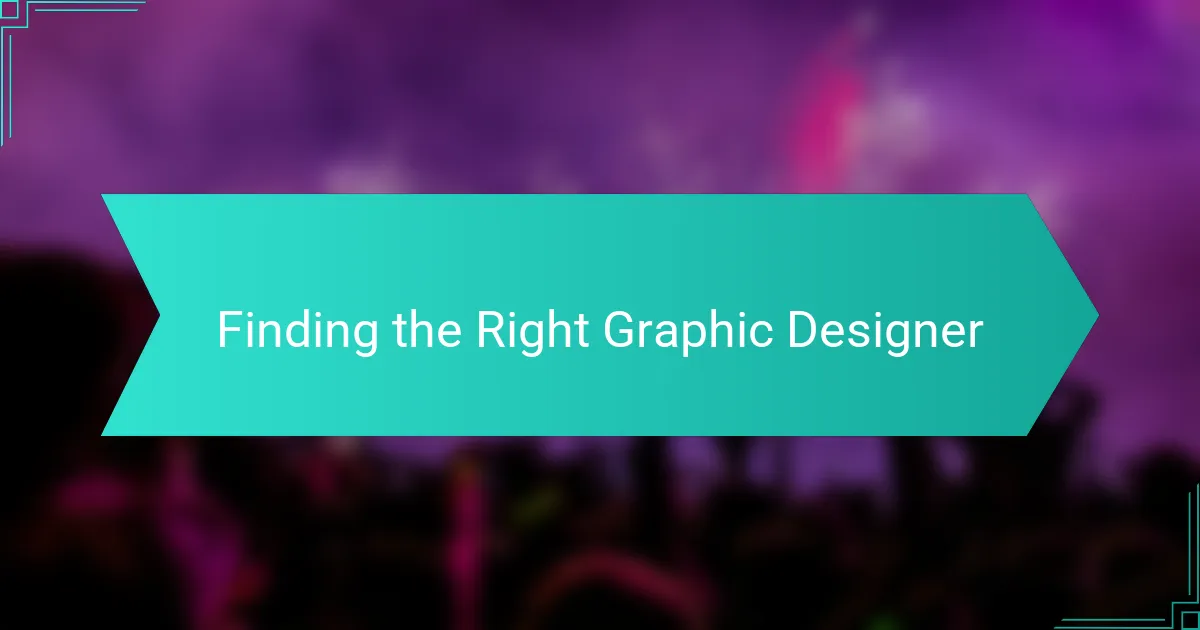
Finding the Right Graphic Designer
Finding the right graphic designer can feel a bit like dating. You need to connect on artistic vision and understand each other’s vibe. I remember scrolling through portfolios, looking for that spark—something that spoke to me. It’s crucial to find someone whose style resonates with your music, as this will reflect in the work they produce.
I once sat down with a few different designers, each with distinct approaches. One designer presented bold, eye-catching visuals that matched my energy, while another focused on a minimalist aesthetic that felt too subdued for my sound. I realized it’s not just about style; it’s about finding someone who can interpret your music and emotions into visuals. Have you ever met someone who just gets you? That’s the kind of connection you want with your designer.
As we discussed ideas, I found myself excited by how they took my rough concepts and transformed them into striking imagery. The best designers are those who listen actively and encourage dialogue. I’ve learned that a collaborative spirit in this relationship can lead to unexpected and beautiful outcomes. Have you thought about how much a graphic designer could elevate your musical journey? Trust me, it’s worth the search.
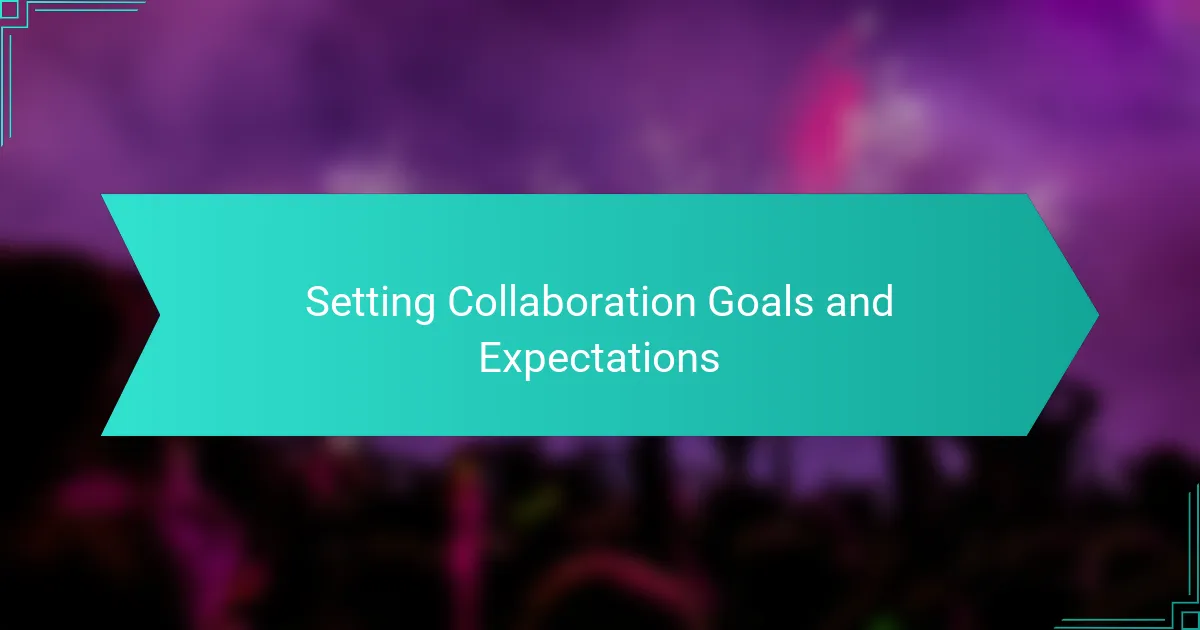
Setting Collaboration Goals and Expectations
Setting clear collaboration goals and expectations is essential for any successful creative partnership. When I first started working with my graphic designer, we spent time discussing what we wanted to achieve. I found that being upfront about my vision made it easier for us to align our ideas. I often ask myself: how will we know we’re succeeding if we haven’t defined what success looks like?
We created a mood board as our first step. This not only helped us visualize our goals but also allowed us to explore different concepts together. I remember moments of excitement as we pinned images that sparked inspiration, choosing colors and styles that resonated with both the music and our artistic intentions. It’s amazing how a shared visual reference can act as a roadmap for collaboration.
Regular check-ins were also vital. I scheduled weekly meetings to discuss progress and address any concerns. It felt reassuring to know we were both on the same page. Have you ever worked on a project where you felt completely in sync with your partner? That’s the magic of setting clear expectations—it creates an environment where creativity can truly flourish.
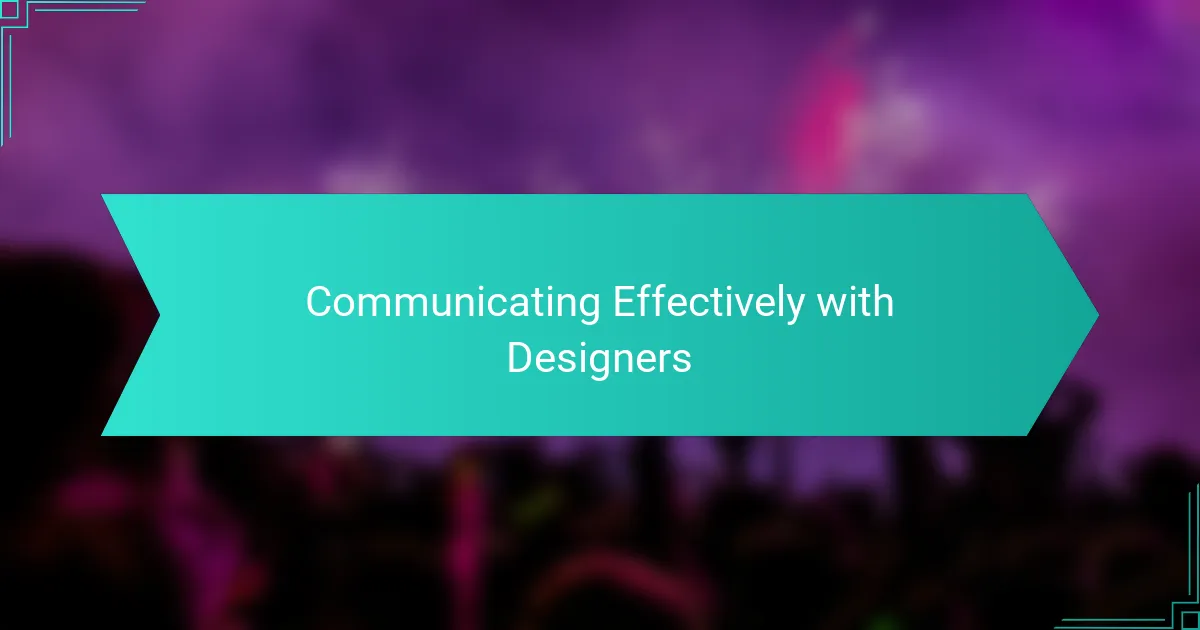
Communicating Effectively with Designers
Effective communication with designers is paramount. I’ve learned that the language of visual art can sometimes feel abstract, so clarity is key. I recall a project where I elaborated on the mood I envisioned for the album cover, carefully describing how I wanted it to feel rather than only what I wanted it to look like. This approach sparked a richer dialogue that led to my designer creating something truly enchanting.
It’s also crucial to ask questions and listen actively. In one of my sessions with a designer, they asked me how I wanted my music to be perceived. I didn’t expect that question, but it made me reflect deeper on my artistic identity. I found that discussing my inspirations opened the door to exploring ideas that I had previously overlooked. Have you ever realized that asking the right questions can lead to unexpected insights?
Sharing references can bridge gaps in understanding. I often send my designer images, colors, or even album covers that vibe with the ideas we’re discussing. This exchange of visual materials provides a common ground and speeds up the creative process. In my experience, taking the time to communicate effectively has always resulted in designs that resonate with my musical essence, making every collaboration a rewarding journey.
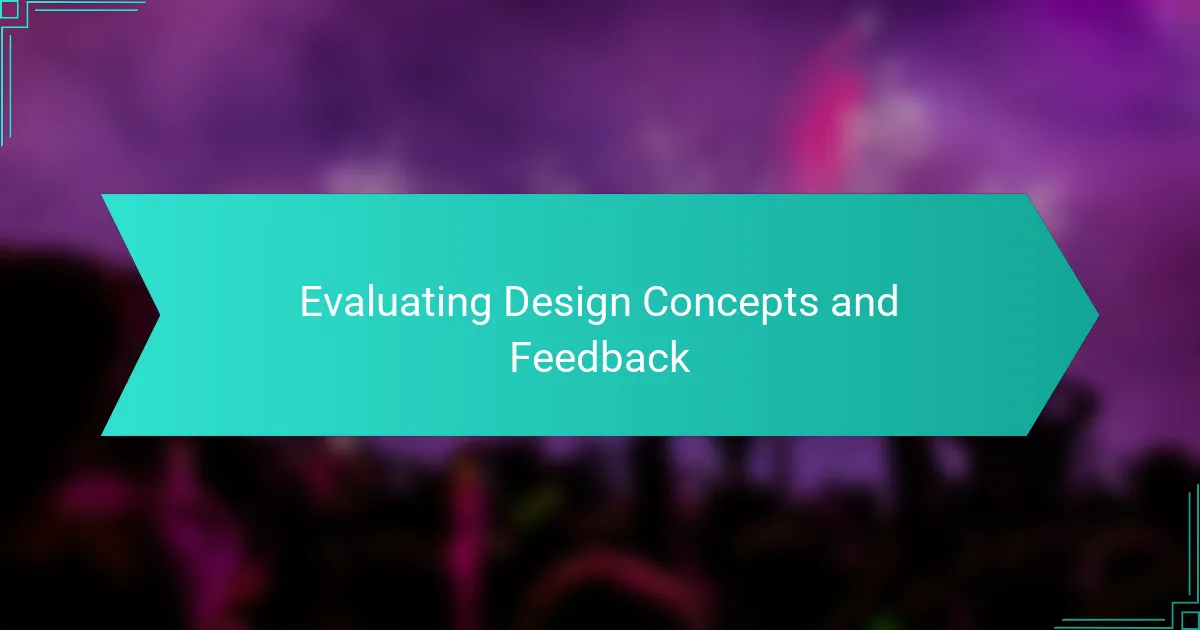
Evaluating Design Concepts and Feedback
When evaluating design concepts, I found it incredibly important to embrace an open dialogue with my graphic designer. For instance, I remember feeling a rush of excitement when I first saw the mockups. However, I also had moments of hesitation; I knew we needed to ensure that the designs aligned with my music’s overall vibe. This back-and-forth not only clarified my vision but also empowered my designer to explore creative avenues I hadn’t considered yet.
Feedback sessions can sometimes feel daunting, but I approached them as opportunities for growth. I made sure to balance my insights with encouragement for the designer’s vision. Here are some effective strategies I discovered during this part of the collaboration:
- Share specific examples of what you love or dislike in the designs to guide revisions.
- Use visual references, like mood boards, to clarify your artistic direction.
- Encourage the designer to present alternative concepts based on your feedback.
- Maintain a positive tone, focusing on both what works and what needs improvement.
- Be open to unexpected ideas that might enrich your original concept.
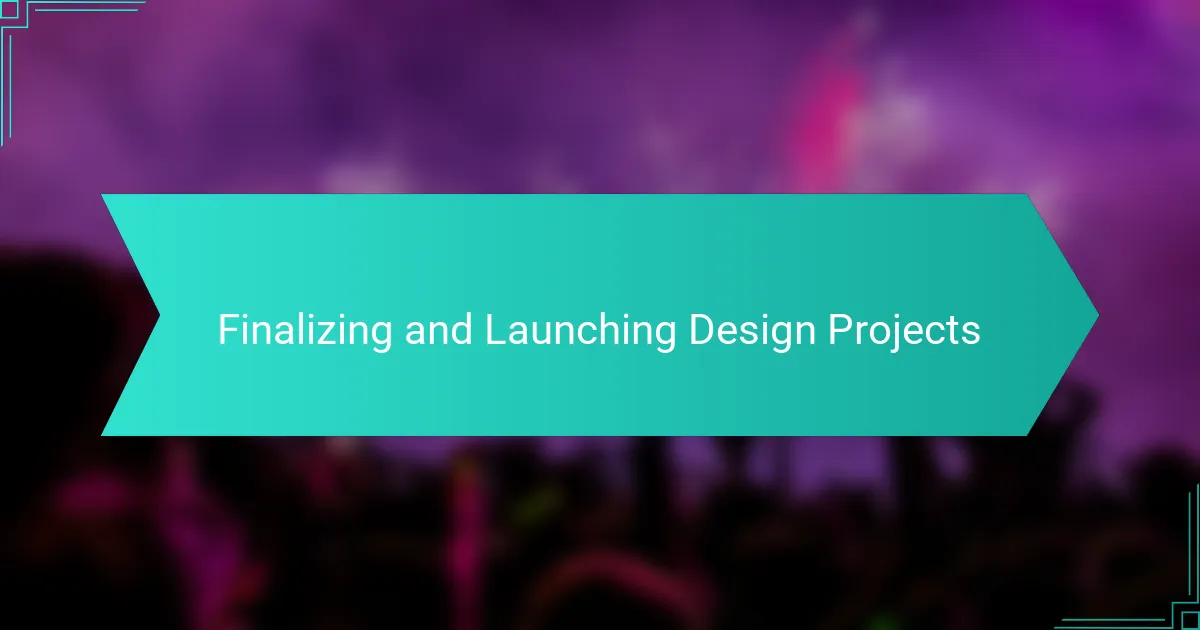
Finalizing and Launching Design Projects
Once the design project reached its final stages, it was crucial to have open lines of communication with the graphic designer. I vividly remember the excitement I felt as we reviewed the draft versions together, exchanging ideas and minor tweaks until we found the perfect balance. It felt like piecing together a puzzle where every adjustment pushed the project closer to its vision.
The launch day was exhilarating. I could hardly contain my anticipation as we unveiled the designs across my social media platforms. It wasn’t just about the visuals; it was about sharing what we had poured our hearts into. Here are key steps I found essential when finalizing and launching design projects:
- Conduct a thorough review: Ensure all elements reflect your brand’s identity and message.
- Seek feedback: Gather opinions from trusted peers or fans before going live.
- Prepare promotional materials: Create content that highlights the new designs and engage your audience.
- Set a launch date: Choose a strategic time for maximum visibility and impact.
- Monitor responses: Engage with your audience post-launch to gather reactions and insights for future projects.

